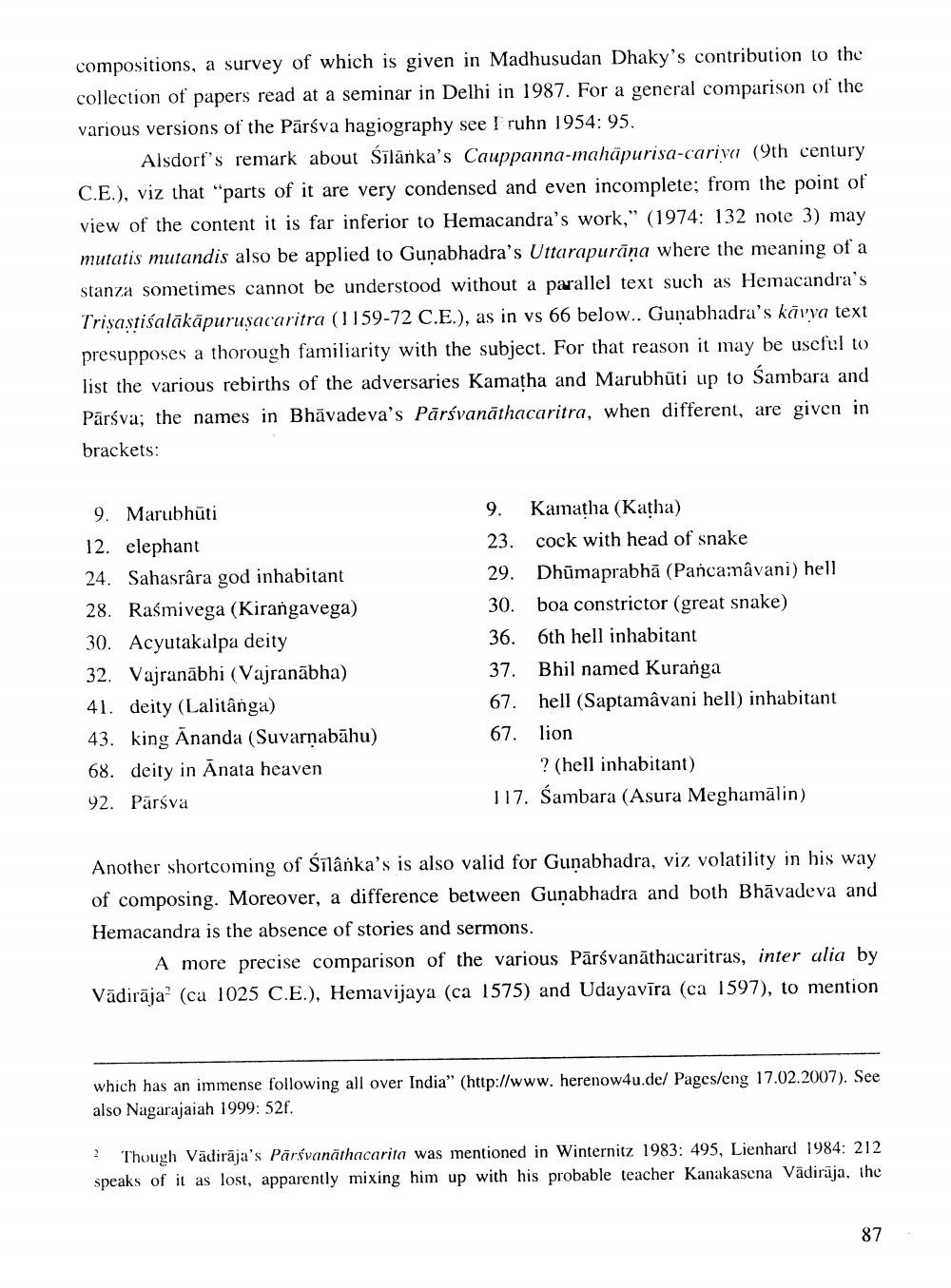________________
compositions, a survey of which is given in Madhusudan Dhaky's contribution to the collection of papers read at a seminar in Delhi in 1987. For a general comparison of the various versions of the Pārsva hagiography see I ruhn 1954: 95.
Alsdorf's remark about Sīlānka's Cauppanna-mahāpurisa-cariva (9th century C.E.), viz that "parts of it are very condensed and even incomplete; from the point of view of the content it is far inferior to Hemacandra's work," (1974: 132 note 3) may mutatis mutandis also be applied to Gunabhadra's Uttarapurāna where the meaning of a stanza sometimes cannot be understood without a parallel text such as Hemacandra's Trişastiśalākāpuruşacaritra (1 159-72 C.E.), as in vs 66 below.. Gunabhadra's käiva text presupposes a thorough familiarity with the subject. For that reason it may be useful to list the various rebirths of the adversaries Kamatha and Marubhūti up to Sambara and Pārsva; the names in Bhāvadeva's Pārsvanāthacaritra, when different, are given in brackets:
9. Marubhūti 12. elephant 24. Sahasrara god inhabitant 28. Raśmivega (Kirangavega) 30. Acyutakalpa deity 32. Vajranābhi (Vajranābha) 41. deity (Lalitânga) 43. king Ananda (Suvarnabāhu) 68. deity in Anata heaven 92. Pārsva
9. Kamatha (Katha) 23. cock with head of snake 29. Dhūmaprabhā (Pancamâvani) hell 30. boa constrictor (great snake) 36. 6th hell inhabitant 37. Bhil named Kuranga 67. hell (Saptamâvani hell) inhabitant 67. lion
? (hell inhabitant) 117. Sambara (Asura Meghamalin)
Another shortcoming of śīlanka's is also valid for Gunabhadra, viz volatility in his way of composing. Moreover, a difference between Gunabhadra and both Bhāvadeva and Hemacandra is the absence of stories and sermons.
A more precise comparison of the various Pārsvanāthacaritras, inter alia by Vādirāja' (ca 1025 C.E.), Hemavijaya (ca 1575) and Udayavīra (ca 1597), to mention
which has an immense following all over India" (http://www. herenow4u.de/Pages/eng 17.02.2007). See also Nagarajaiah 1999: 52f.
2 Though Vădirāja's Pārsvanāthacarita was mentioned in Winternitz 1983: 495, Lienhard 1984: 212 speaks of it as lost, apparently mixing him up with his probable teacher Kanakasena Vădirāja, the
87




